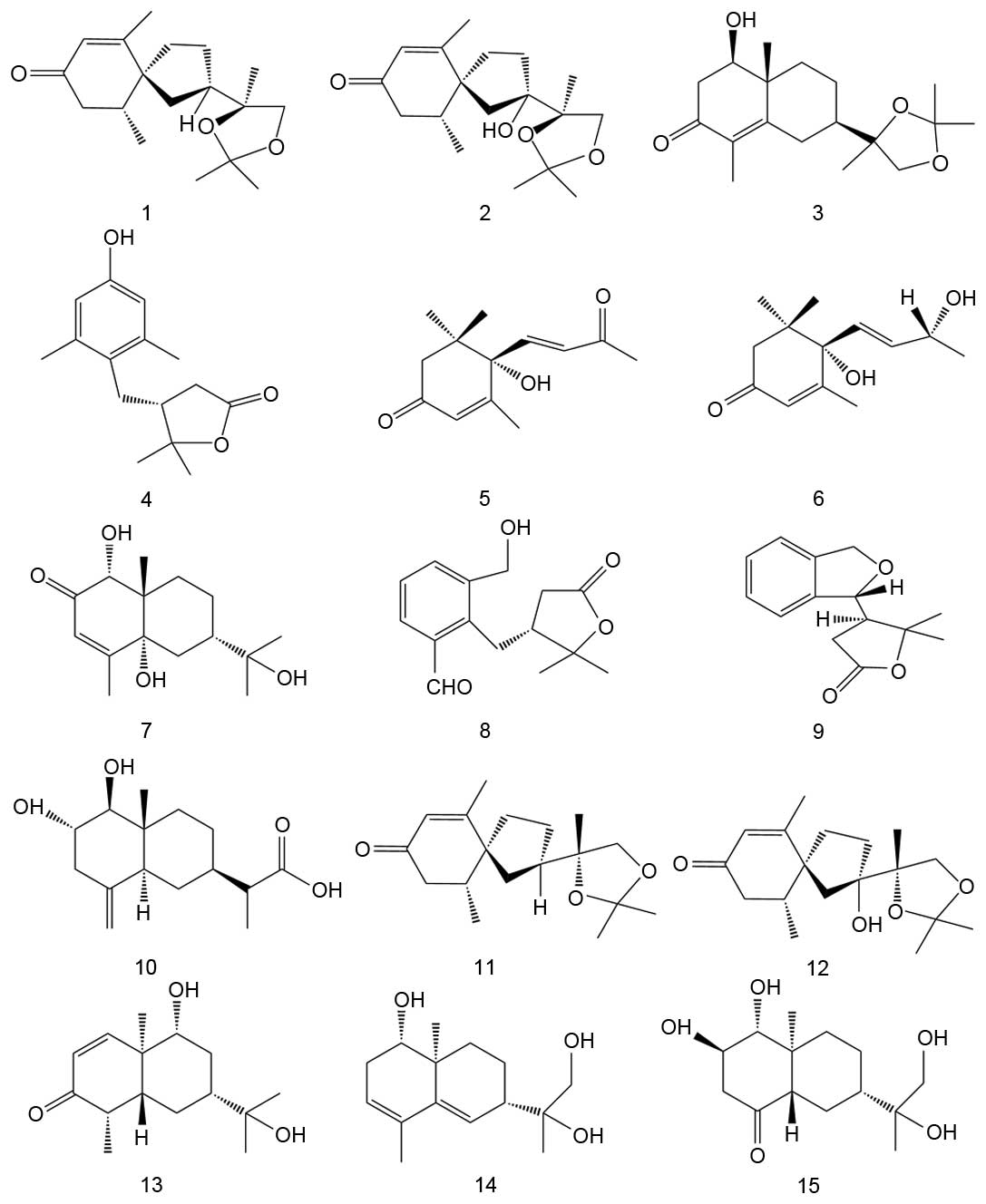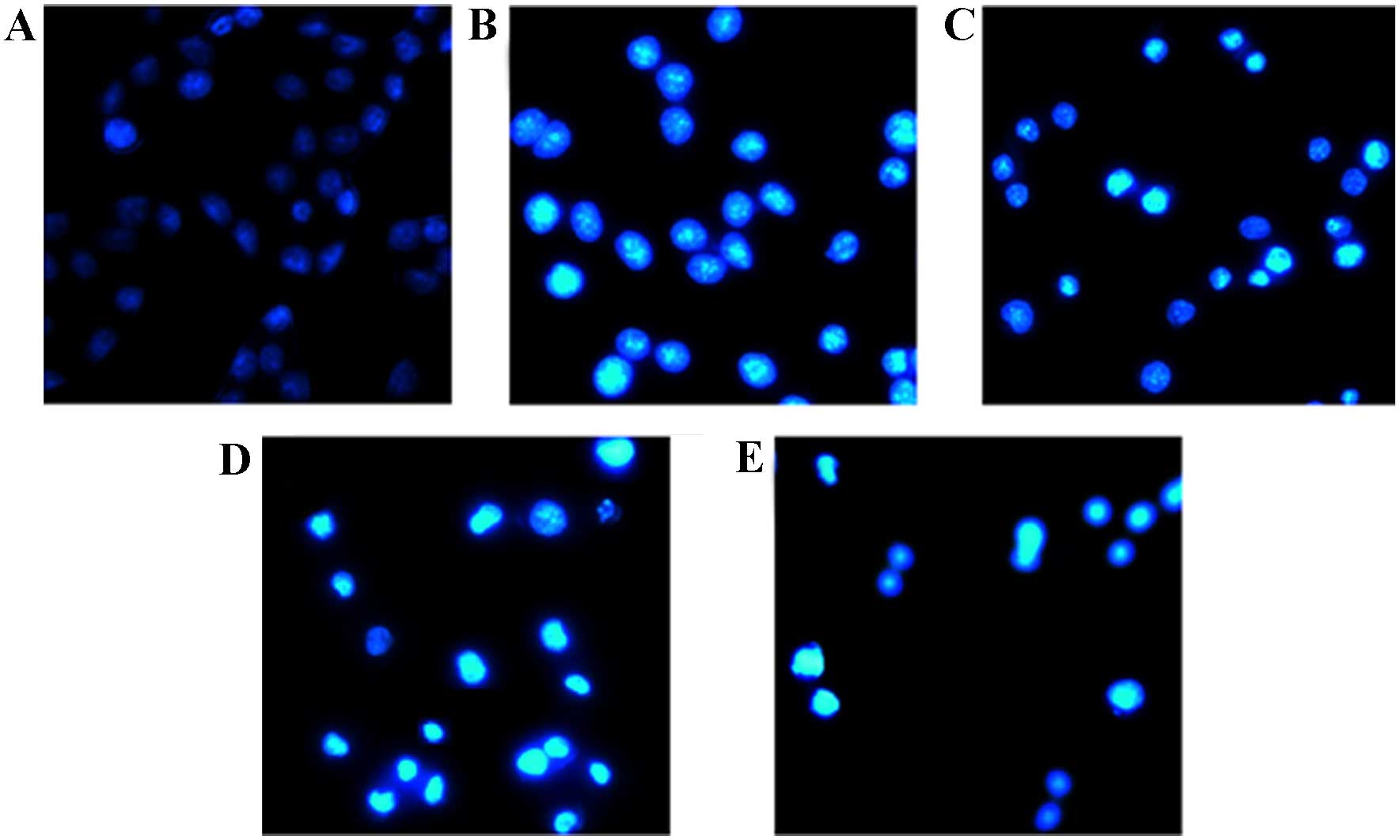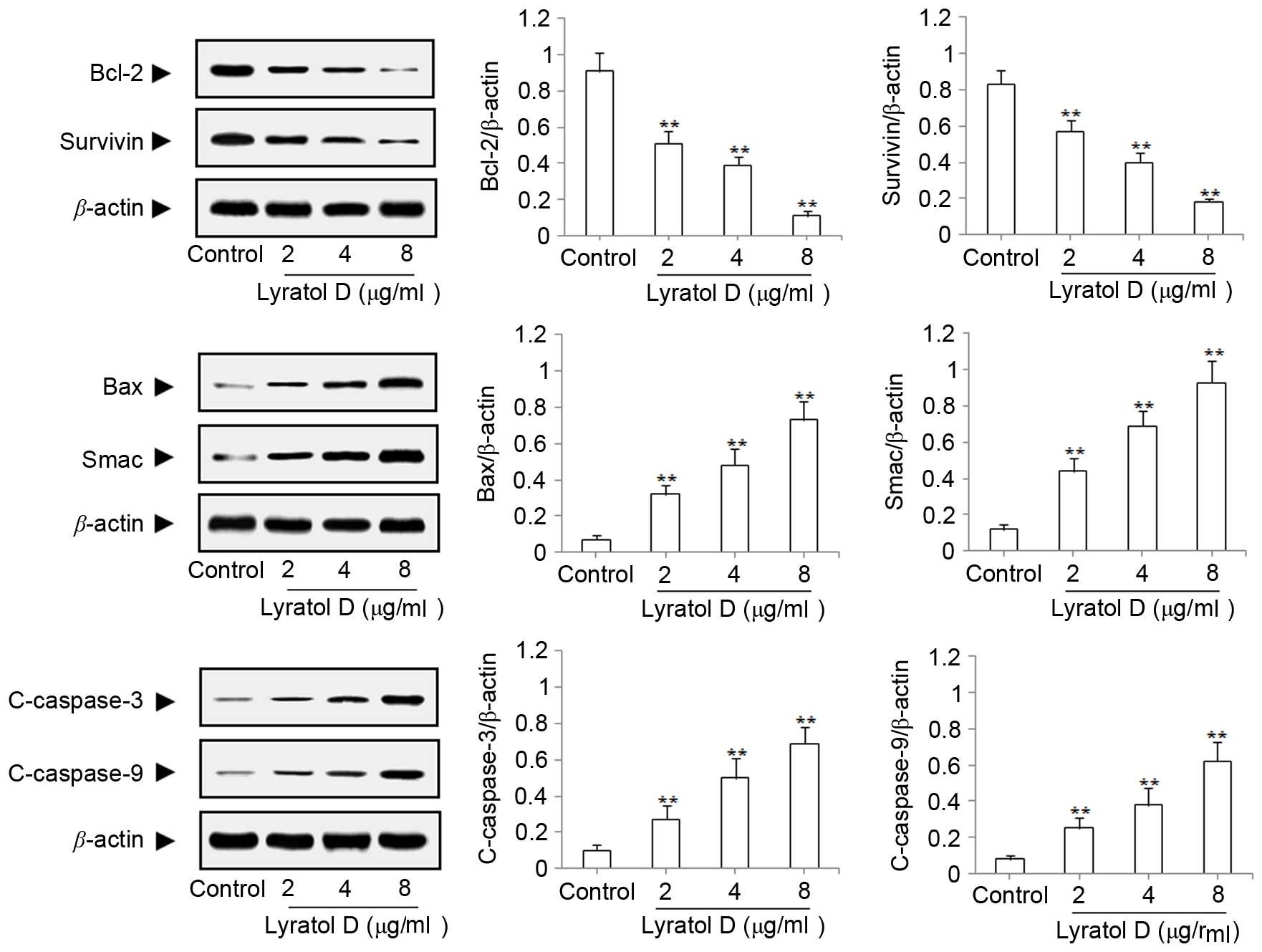|
1
|
Sun LX, Bi KS and Wang MW: Progress in the
studies of Solanum lyratum Thunb. J Shenyang Pharm Univ.
23:251–255. 2006.
|
|
2
|
Ren Y, Zhang DW and Dai SJ: Chemical
constituents from Solanum lyratum. Chin J Nat Med. 7:203–205. 2009.
View Article : Google Scholar
|
|
3
|
Yang L, Feng F and Gao Y: Chemical
constituents from herb of Solanum lyratum. Zhongguo Zhong Yao Za
Zhi. 34:1805–1808. 2009.(In Chinese). PubMed/NCBI
|
|
4
|
Wan FS, Wu J, Li H, Tu S and Yu LH: Study
on apoptosis of human stomach SGC-7901 cells induced by extracts of
Solanum lyratum. Zhong Yao Cai. 32:245–249. 2009.(In Chinese).
PubMed/NCBI
|
|
5
|
Yu LH, Xu BH, Wu J, Li H, Tu S and Wan FS:
Influence of Solanum lyratum Thunb etract on apoptosis and the
expression of bcl-xl/bid genes in human stomach cancer SGC-7901
cells. Chin Tradit Pat Med. 30:1744–1748. 2008.
|
|
6
|
Hsu SC, Lu JH, Kuo CL, Yang JS, Lin MW,
Chen GW, Su CC, Lu HF and Chung JG: Crude extracts of Solanum
lyratum induced cytotoxicity and apoptosis in a human colon
adenocarcinoma cell line (Colo 205). Anticancer Res. 28:1045–1054.
2008.PubMed/NCBI
|
|
7
|
Ren J, Feng GN, Wang MW and Sun LX: The
primary study on the anti-tumor effect of tatal saponin of Solanum
lyratum Thunb. Cance Res Prevent Treat. 33:262–264. 2006.(In
Chinese).
|
|
8
|
Sun LX, Ren J, Wang MW and Bi KS:
Preliminary study on the anti-tumor effect of the extracts of
Solanum lyratum Thunb. J Shenyang Pharm Univ. 22:210–212. 2005.
|
|
9
|
Li GS, Yao F, Zhang L, Yue XD and Dai SJ:
New sesquiterpenoids derivatives from Solanum lyratum and their
cytotoxicies. J Asian Nat Prod Res. 16:129–134. 2014. View Article : Google Scholar : PubMed/NCBI
|
|
10
|
Ren Y, Shen L, Zhang DW and Dai SJ: Two
new sesquiterpenoids from Solanum lyratum with cytotoxic
activities. Chem Pharm Bull (Tokyo). 57:408–410. 2009. View Article : Google Scholar : PubMed/NCBI
|
|
11
|
Yue XD, Yue XD, Yao F, Zhang L, Li GS and
Dai SJ: Sesquiterpenoids from Solanum lyratum. Zhongguo Zhong Yao
Za Zhi. 39:453–456. 2014.(In Chinese). PubMed/NCBI
|
|
12
|
Yao F, Song QL, Zhang L, Li GS and Dai SJ:
Solajiangxins A-C, three new cytotoxic sesquiterpenoids from
Solanum lyratum. Fitoterapia. 89:200–204. 2013. View Article : Google Scholar : PubMed/NCBI
|
|
13
|
Yao F, Song QL, Zhang L, Li GS and Dai SJ:
Three new cytotoxic sesquiterpenoids from Solanum lyratum.
Phytochem Lett. 6:453–456. 2013. View Article : Google Scholar
|
|
14
|
Dai SJ, Shen L and Ren Y: Two new
eudesmane-type sesquiterpenoids from Olanum lyratum. Nat Prod Res.
23:1196–1200. 2009. View Article : Google Scholar : PubMed/NCBI
|
|
15
|
Xie B, Zhou JP, Shu GS, Liu DC, Zhou J,
Chen J and Yuan L: Restoration of klotho gene expression induces
apoptosis and autophagy in gastric cancer cells: Tumor suppressive
role of klotho in gastric cancer. Cancer Cell Int. 13:182013.
View Article : Google Scholar : PubMed/NCBI
|
|
16
|
Baharara J, Namvar F, Ramezani T, Mousavi
M and Mohamad R: Silver nanoparticles biosynthesized using Achillea
biebersteinii flower extract: Apoptosis induction in MCF-7 cells
via caspase activation and regulation of Bax and Bcl-2 gene
expression. Molecules. 20:2693–2706. 2015. View Article : Google Scholar : PubMed/NCBI
|
|
17
|
Peng W, Wu JG, Jiang YB, Liu YJ, Sun T, Wu
N and Wu CJ: Antitumor activity of
4-O-(2′-O-acetyl-6′-O-p-coumaroyl-β-D-glucopyranosyl)-p-coumaric
acid against lung cancers via mitochondrial-mediated apoptosis.
Chem Biol Interact. 233:8–13. 2015. View Article : Google Scholar : PubMed/NCBI
|
|
18
|
Shi YG: A structural view of
mitochondria-mediated apoptosis. Nat Struct Biol. 8:394–401. 2001.
View Article : Google Scholar : PubMed/NCBI
|
|
19
|
Deng YB, Lin YH and Wu XW: TRAIL-induced
apoptosis requires Bax-dependent mitochondrial release of
Smac/DIABLO. Genes Dev. 16:33–45. 2002. View Article : Google Scholar : PubMed/NCBI
|
|
20
|
Du C, Fang M, Li Y, Li L and Wang X: Smac,
a mitochondrial protein that promotes cytochrome c-dependent
caspase activation by eliminating IAP inhibition. Cell. 102:33–42.
2000. View Article : Google Scholar : PubMed/NCBI
|
|
21
|
Zhang XJ, Mei WL, Tan GH, Wang CC, Zhou
SL, Huang FR, Chen B, Dai HF and Huang FY: Strophalloside induces
apoptosis of SGC-7901 cells through the mitochondrion-dependent
caspase-3 pathway. Molecules. 20:5741–5728. 2015.
|
|
22
|
Ambrosini G, Adida C and Altieri DC: A
novel anti-apoptosis gene, surviving, expressed in cancer and
lymphoma. Nat Med. 3:917–921. 1997. View Article : Google Scholar : PubMed/NCBI
|













